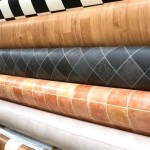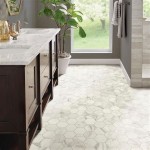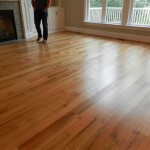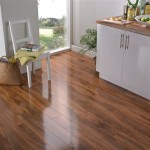Is Laminate Flooring Good For Health? A Comprehensive Overview
Laminate flooring has emerged as a popular alternative to hardwood, tile, and carpet in residential and commercial spaces. Its affordability, durability, and aesthetic versatility make it an attractive choice for many. However, a crucial aspect to consider when selecting flooring is its impact on health. This article will explore the health implications associated with laminate flooring, examining its composition, potential emissions, and maintenance considerations.
Understanding the materials and manufacturing processes involved is essential to evaluating the health aspects of laminate flooring. Typically, laminate flooring consists of several layers fused together under high pressure. These layers include a wear layer, a decorative layer, a core board, and a backing layer. The wear layer, often made of aluminum oxide, provides resistance to scratches, stains, and fading. The decorative layer is a printed image that replicates the appearance of wood, stone, or other materials. The core board, usually made of high-density fiberboard (HDF) or medium-density fiberboard (MDF), provides the structural integrity of the plank. The backing layer provides stability and moisture resistance.
The health concerns primarily revolve around the composition of the core board and the adhesives used in the manufacturing process. HDF and MDF are composite wood products that often utilize formaldehyde-based resins as binders. Formaldehyde is a volatile organic compound (VOC) known to have adverse health effects, particularly at elevated concentrations. Continuous exposure to formaldehyde can lead to respiratory irritation, allergic reactions, and, in some cases, an increased risk of certain types of cancer.
Formaldehyde Emissions and VOCs
The emission of formaldehyde from laminate flooring is a significant area of concern. The levels of formaldehyde emitted depend on the type of resin used, the manufacturing process, and the age of the flooring. Older laminate flooring products manufactured with higher formaldehyde content resins are more likely to emit greater amounts of the gas. Newer manufacturing processes and regulations have aimed to reduce formaldehyde emissions, leading to the development of low-VOC and formaldehyde-free laminate flooring options.
Various organizations and standards have been established to regulate formaldehyde emissions from composite wood products. The California Air Resources Board (CARB) has implemented strict regulations, known as CARB Phase 1 and CARB Phase 2, which limit the amount of formaldehyde that can be emitted from composite wood products sold in California. These regulations have become a benchmark for the industry, and many manufacturers now adhere to CARB Phase 2 standards, even if they are not selling products in California.
Another important certification to look for is the FloorScore certification. This certification ensures that the laminate flooring product meets stringent VOC emission criteria and contributes to good indoor air quality. Products with FloorScore certification have been independently tested and verified to comply with health-based standards.
When selecting laminate flooring, it is crucial to look for products that are labeled as low-VOC or formaldehyde-free. These products are manufactured with alternative resins or processes that minimize or eliminate formaldehyde emissions. Choosing these options significantly reduces the potential for indoor air pollution and improves the overall health profile of the flooring.
The term VOC refers to a wide range of organic chemicals that can evaporate at room temperature. Besides formaldehyde, other VOCs may be present in laminate flooring or the adhesives used during installation. These VOCs can contribute to indoor air pollution and may cause various health problems, including headaches, nausea, and respiratory irritation. It is essential to ensure proper ventilation during and after installation to minimize exposure to VOCs.
Allergens and Mold Growth
Laminate flooring generally presents a lower risk of harboring allergens compared to carpets. Carpets can trap dust, pollen, pet dander, and other allergens, creating a breeding ground for dust mites and other organisms that can trigger allergic reactions. The smooth, non-porous surface of laminate flooring makes it more difficult for allergens to accumulate and easier to clean. Regular cleaning with a damp mop or vacuum cleaner can effectively remove dust and other particles from laminate flooring, reducing the potential for allergic reactions.
However, while laminate flooring itself is less likely to harbor allergens, the subfloor underneath can still be a source of mold growth if moisture is present. If the subfloor is not properly prepared or if there is a moisture problem in the room, mold can grow underneath the laminate flooring. Mold spores can then be released into the air, causing respiratory problems and other health issues. To prevent mold growth, it is crucial to ensure that the subfloor is dry and properly sealed before installing laminate flooring. A vapor barrier should be installed between the subfloor and the laminate flooring to prevent moisture from seeping through.
In areas prone to moisture, such as bathrooms and kitchens, it is particularly important to choose water-resistant or waterproof laminate flooring. These products are designed to withstand moisture and prevent water from penetrating the core board, reducing the risk of mold growth. Regular cleaning and prompt removal of spills can also help prevent moisture buildup and mold formation.
Individuals with allergies or asthma should choose laminate flooring options specifically designed to be allergen-resistant. Some products are treated with antimicrobial agents that inhibit the growth of bacteria and mold, further reducing the potential for allergic reactions and respiratory problems.
Installation and Maintenance Practices
Proper installation and maintenance practices are crucial for minimizing the health impact of laminate flooring. As mentioned earlier, ensuring adequate ventilation during and after installation is essential to reduce exposure to VOCs released from the flooring or adhesives. Opening windows and using fans can help circulate the air and dissipate any lingering odors. It is also recommended to avoid sleeping in the room immediately after installation to allow sufficient time for the VOCs to dissipate.
The type of adhesive used during installation can also affect the health impact of laminate flooring. It is best to use low-VOC or zero-VOC adhesives to minimize the emission of harmful chemicals into the air. Water-based adhesives are generally considered a safer option compared to solvent-based adhesives. The adhesive should be applied according to the manufacturer's instructions to ensure proper bonding and minimize the potential for off-gassing.
Regular cleaning and maintenance are essential for maintaining the health aspects of laminate flooring. Dust and dirt can accumulate on the surface, contributing to indoor air pollution. Regular vacuuming with a soft brush attachment or sweeping with a microfiber mop can effectively remove dust and debris. Damp mopping with a mild detergent is also recommended for removing stains and spills. Avoid using harsh chemicals or abrasive cleaners, as they can damage the wear layer of the flooring and potentially release harmful substances.
It is crucial to address any moisture problems promptly to prevent mold growth. If water spills on the floor, it should be wiped up immediately. Check for leaks around plumbing fixtures and repair them as soon as possible. If there is evidence of water damage or mold growth, it is essential to address the underlying cause and remediate the affected area. Proper ventilation and humidity control can also help prevent moisture buildup and mold formation.
Consider using a HEPA filter vacuum cleaner to remove dust and allergens from the floor effectively. HEPA filters can trap even the smallest particles, reducing the amount of allergens released into the air. Avoid using steam mops, as excessive moisture can damage the laminate flooring and encourage mold growth.
In conclusion, the health impact of laminate flooring depends on several factors, including the materials used, the manufacturing process, and the installation and maintenance practices. By selecting low-VOC or formaldehyde-free products, ensuring proper ventilation during installation, and maintaining the flooring properly, the potential health risks associated with laminate flooring can be minimized. Choosing certified products from reputable manufacturers is also recommended to ensure that the flooring meets stringent health and safety standards.

Value Carpets Flooring What Are The Health Benefits Of Laminate

Is Laminate Flooring Safe For Health Singapore

What Are The Best Options For Non Toxic Flooring

The Health Risks Associated With Laminate Flooring Tidy Up

Discovering The Most Health Conscious Flooring Material

Is Wood Flooring Bad For Your Health Singapore

Should You Be Concerned About Formaldehyde In Laminate Flooring

The Benefits Of Installing Laminate Flooring Singapore

The Benefits Of Laminate Flooring Transform Your Home For Better Health

Is Vinyl Flooring Harmful To Health Singapore Laminate
Related Posts








